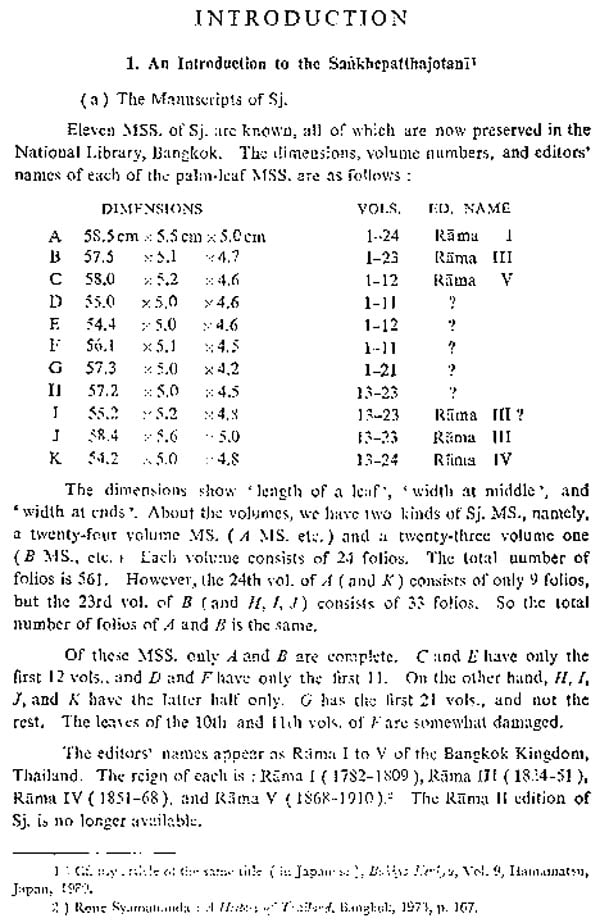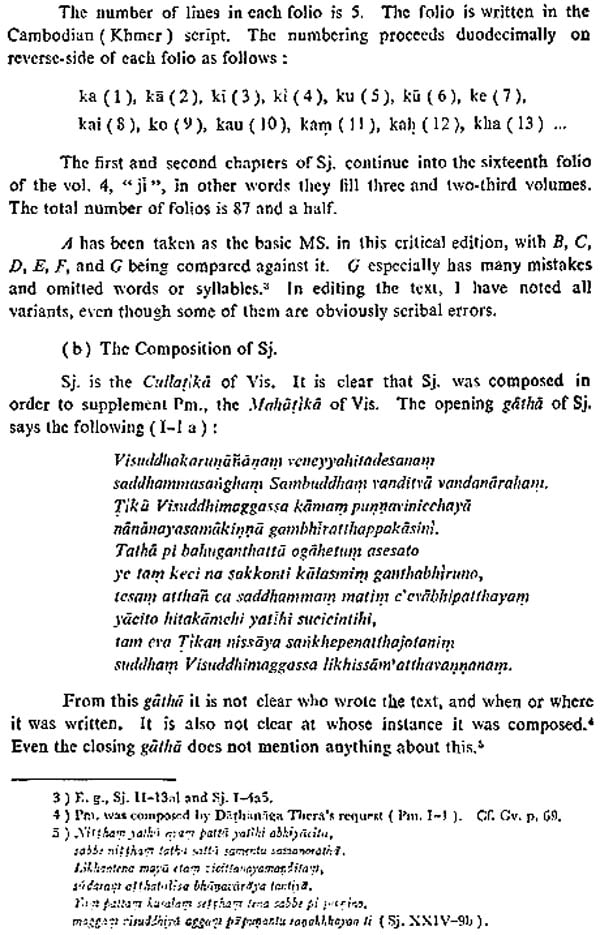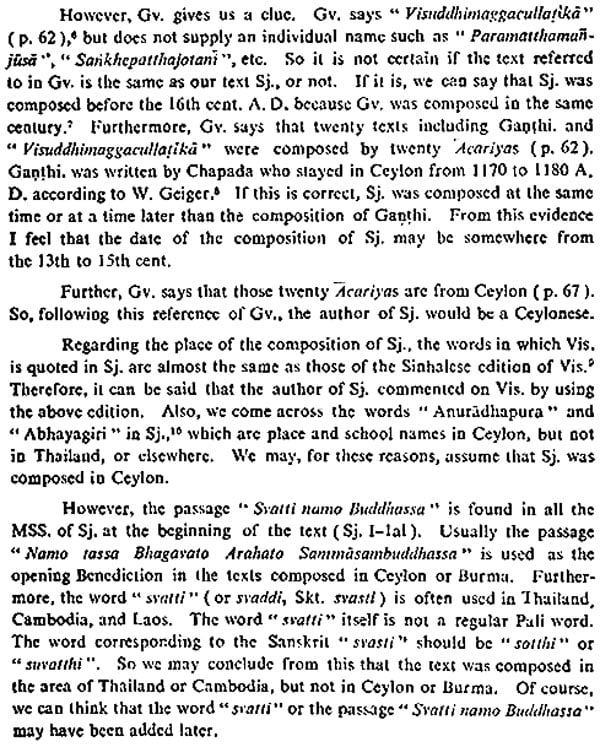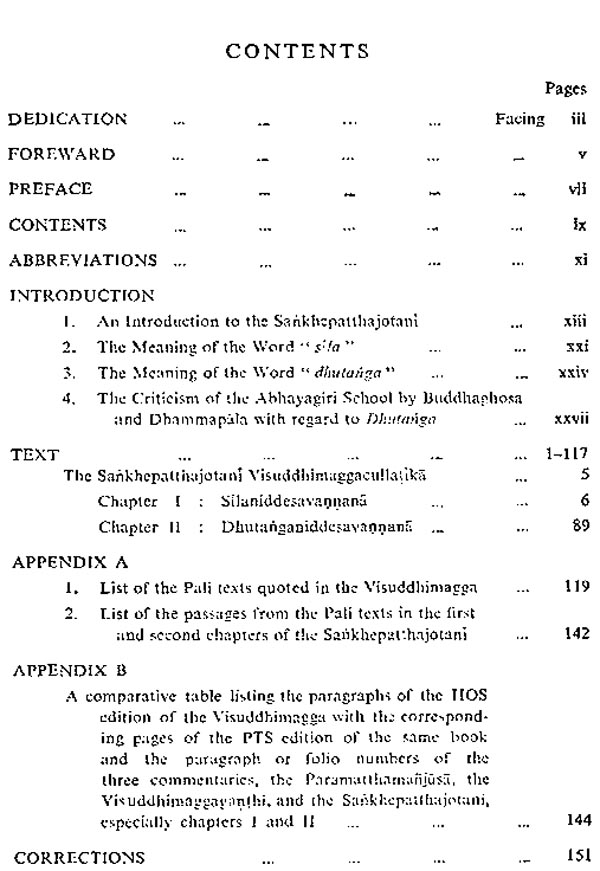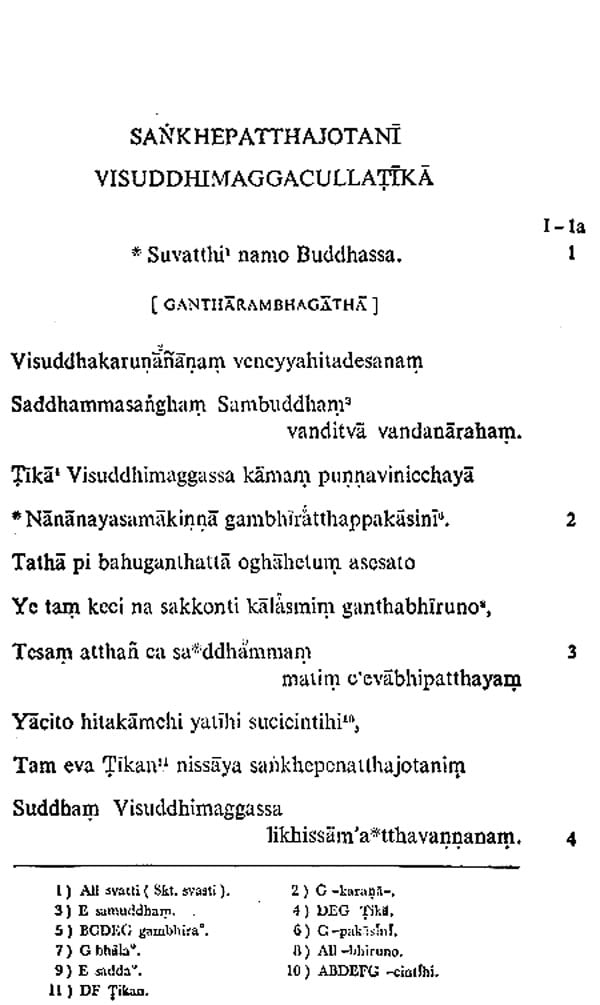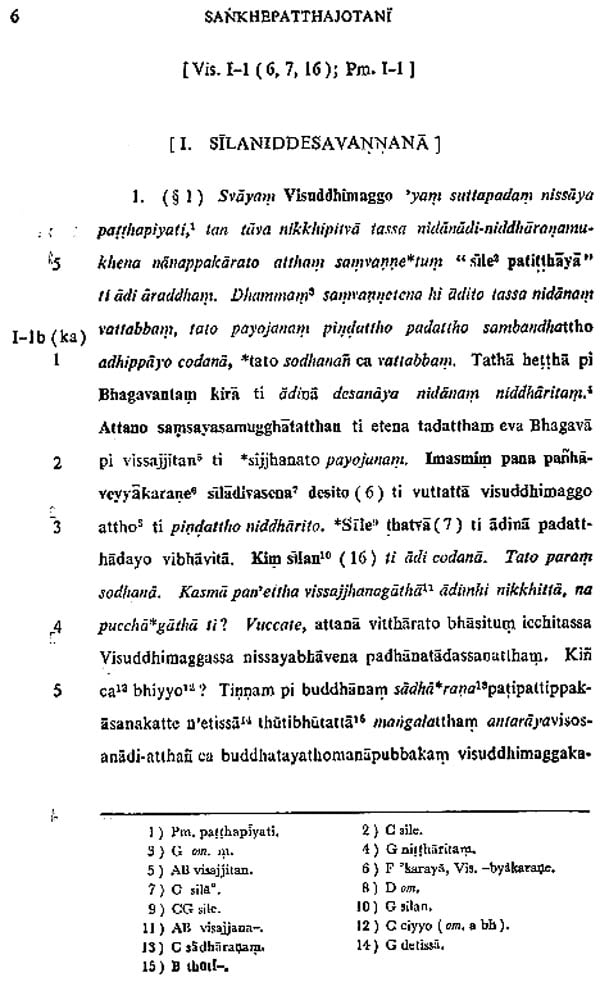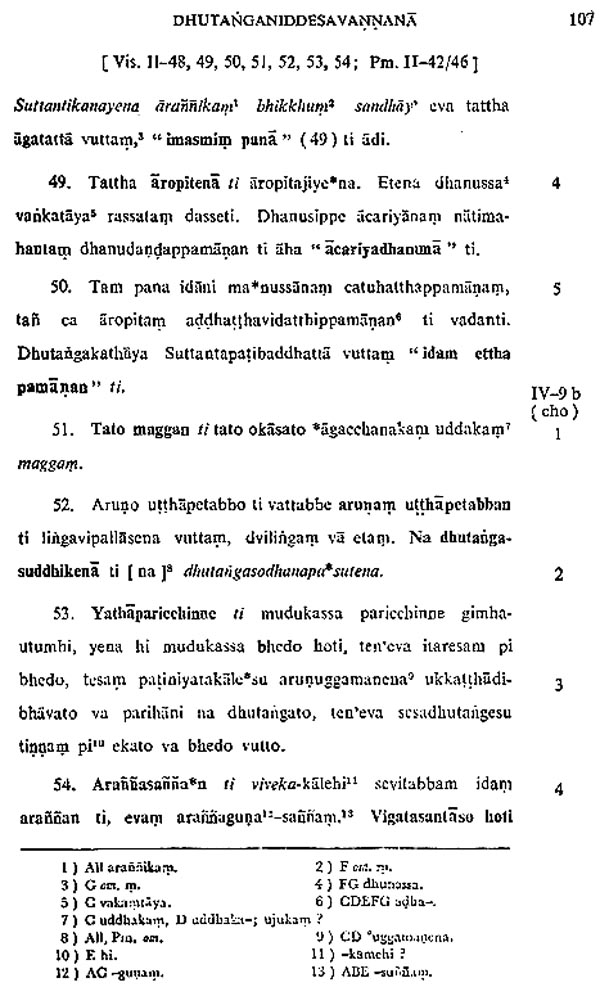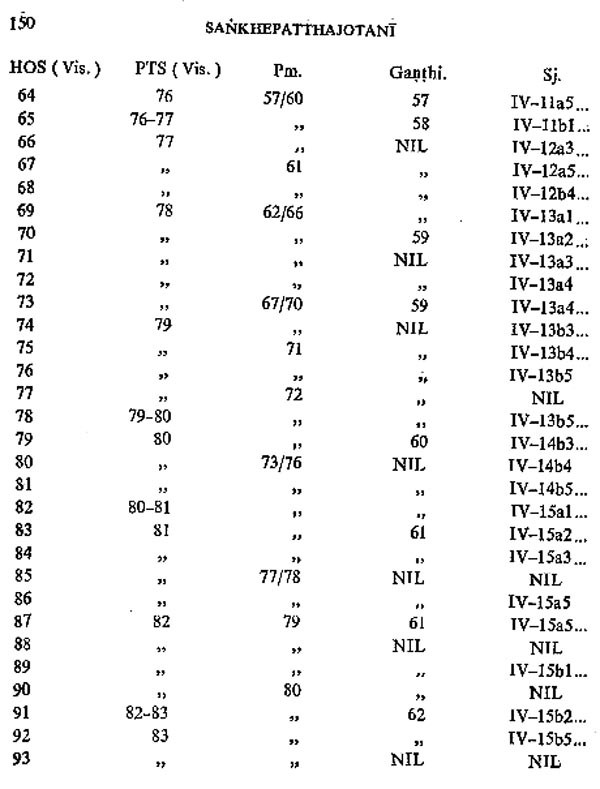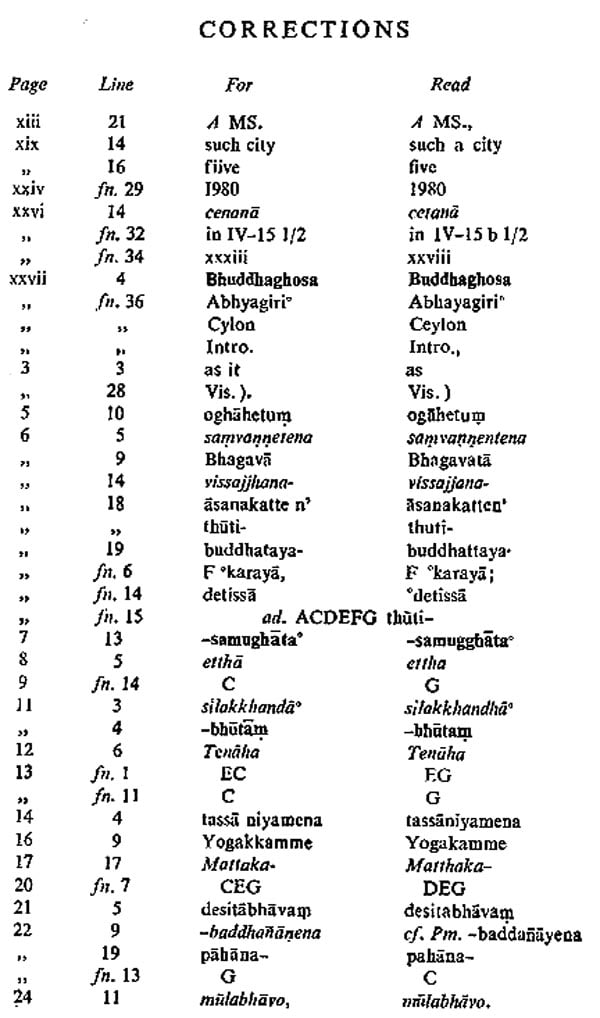
Sankhepattha Jotani Visuddhimagga Cullatika Sila-Dhutanga: A Study of the First and Second Chapters of The Visuddhimagga and Its Commentaries (An Old Book)
Book Specification
| Item Code: | NAU527 |
| Author: | Jion Abe |
| Publisher: | Bhandarkar Oriental Research Institute, Pune |
| Language: | English |
| Edition: | 1981 |
| Pages: | 182 |
| Cover: | PAPERBACK |
| Other Details | 9.50 X 6.50 inch |
| Weight | 260 gm |
Book Description
Poona, it may be recalled, is one of the two centers in India (the other being Calcutta) where regular study of Pali and Buddhism, at different levels, was started for the first time in the modern period. The work of the late Professor Dharmananda KOSAMBI in that connection was, indeed, of a pioneering character. He may be said to have initiated a distinguished tradition in that field. It has been the constant Endeavour of the Bhandarkar Institute not only to maintain that tradition but also to augment it in every possible manner. Many scholars from Japan, senior and junior, have come to the Institute for the study of and research in Buddhism and have thereby actively fostered the Institute's efforts in that direction. I am glad that Dr. ABE has now qualified himself to be counted among such scholars. I also feel sure that, apart from his study of Pali Buddhism and related subjects, his fairly long stay in India has enabled him to acquire first-hand knowledge of various aspects of Indian life and culture. This is bound to prove a great asset in his future career.
It is generally admitted that the Visuddhimagga is the most authoritative text for the study of Pali Buddhism. It consists of twenty-three chapters; of which chapter’s I-II discuss "sila ", "Samadhi", and XIV-XXIII "panna". The Visuddhimagga has three well-known commentaries, Dhamapala's Paramatthamanjusa ( ), Chapala ( %la )'s Visuddhimaggaganthi, and the Sankhcpatthajottani ( CullatikA ), a work of unknown authorship. Of these three the Sankhepatthajottani alone is yet to be published. Following a suggestion of Prof. P. V. Bapat; I went to Thailand in April of 1975 and again in 1977 to examine a MS. of the Sankhepatthajotani preserved in the National Library, Bangkok, and was allowed by the same Library to make a microfilm copy. To my knowledge, LI similar MS. has not been found in Silence, Burma, or elsewhere.
The main body of this book is an introduction to the Sankhepatthajottani and a critical edition of its first and second chapters. The importance of the text lies in the fact that it records views which differ from those found in the other two commentaries.
In the Introduction, I first present the MSS. of the Sankhepatthajotani as a Pali source for the study of the Visuddhimagga. Then I discuss the date and place of the composition of this text, and compare its content with that of the Paramunthamanjusa. Next I point out the new views found in this text on such subjects as "anhinga " and "sattangaraparikkhara ", and compare them with the various views of the Nikayas and other commentaries. In parts 2 and 3, 1 clarifies the meaning of the words " sila " and dhutanga" which form the main subjects of the first and second chapters of the Visuddhimagga. Lastly, I discuss how Buddhaghosa and Dhammapala criticized the Abhayagiri School's view of " dhutanga ".
I have added as appendices lists of the Pali texts quoted in the Visuddhimagga and the passages from the Pali texts in the first and second chapters of the Sankhepatthajotoni. I have also added a comparative table listing the paragraphs of the HOS edition of the Visuddhimagga with the corresponding pages of the PTS edition of the same book and the paragraph or folio numbers of the three commentaries including the Sankhepatthajotani. This should provide the reader with a cross-reference guide for comparing the contents of the editions of the Yisuddhimagga and its commentaries.
This book provides only a beginning to the study of the Swansparthajotani. Thetas of critically editing the remaining chapters, a complete translation and index still remain to be done. The author sincerely hopes, however, that this small book will give some help to scholars studying the Visuddhimagga.
It is my pleasure to express my gratitude to those who have helped me in many ways toward the completion of this book. I have first to express my profound indebtedness to Prof. Dr. P. V. Bapat, who has been my teacher in the study of Pali Buddhism and the doctrines of the Visuddhimagga since November of 1974 when I first came to Poona. He was also kind enough to read through the first draft of this book, and his suggestions were of great value in its revision. I have also to express my sincere thanks to Prof. A. M. Garage, Prof. S. D. Joshi, Prof. A. Hirakata, Prof. K. Tamaki, and Prof. J. Takasaki, all of whom encouraged me throughout my doctoral studies.
Prof. It. N. Dandekar has earned my deep gratitude for encouraging me in the study of Pali Buddhism and by kindly offering to write the Foreword to this book. 1 must also acknowledge the kindness and good offices of Mr. B. N. Para jape and Mr. V. L Manjul ( M. A.) of the Bhandarkar 0. R. Institute. I am also very thankful to Prof. V. V. Gokhale, the late Prof. P. L. Vaidya, and Prof. H. Nakamura who all encouraged me in a personal way and contributed to my overall understanding of the Buddhist tradition. I must also mention my feeling of gratitude to Prof. Dr. K. Mizuno, who first initiated me into the field of Buddhist studies. In completing this book, I have received the help of many other persons, too numerous to mention; to them I am also grateful.
Finally, the author must express his thanks to the Authorities of the National Library, Bangkok, and his gratitude to Prof. Dandekar, Mr. Para jape, and Mr. E. R. Walvekar and his staff at the Bhandarkar Press, for all their help in bringing the publication and printing of this book to successful completion.
Book's Contents and Sample Pages
